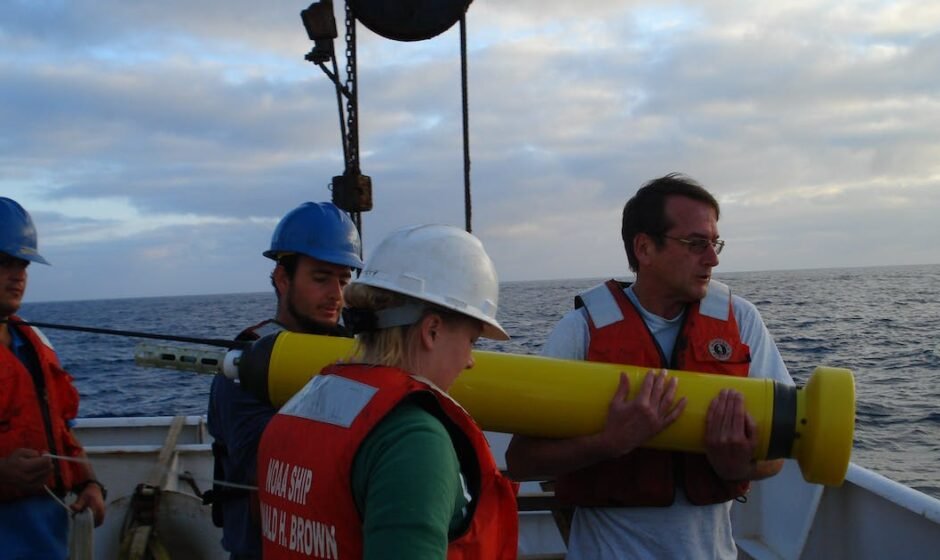Scientists attribute the record-breaking warmth experienced in Minnesota this winter to the rising temperatures of the world’s oceans. According to a recent study conducted by an international team of scientists, the surface temperatures of the oceans set a new heat record in 2023 for the sixth consecutive year. The temperatures surpassed the previous record set in 2022 by nearly 0.5 degrees Fahrenheit, primarily due to climate change and a strong El Niño event.
The impact of the Pacific Ocean on Minnesota’s weather is particularly significant, as explained by John Abraham, a thermal-science expert at the University of St. Thomas and one of the study’s lead scientists. Abraham states that since the weather patterns in Minnesota move from west to east, as the atmosphere passes over the Pacific, it collects moisture and heat, which are then released over Minnesota.
Minnesota’s climatology office reported that December was the warmest month in about 150 years of recorded history for most of the state. Although a brief cold spell occurred last week, bringing January temperatures closer to normal, the month has still been unusually warm. Lakes and ponds in the southern half of the state did not freeze until mid-January, which is the latest freeze date recorded since the 1970s when climatologists began tracking this data. These bodies of water have already started to thaw. The warm winter will have lasting effects on moose, ticks, deer, and other wildlife. Additionally, the lack of ice and warmer water will increase the likelihood of algae blooms and fish kills in the state’s lakes.
The presence of a strong El Niño event typically influences weather patterns, often leading to the trapping of cold air approximately 1,000 miles north of Minnesota and pushing moisture about 1,000 miles south. The state climatology office suggests that this El Niño event, which began in May, is likely the reason behind the dry winter experienced in Minnesota.
Climate change is primarily driven by warming oceans, according to Abraham. Greenhouse gases, such as carbon dioxide and methane, prevent heat from escaping into space, resulting in its reflection back to Earth. While a small portion of this excess heat warms the air and melts polar ice and snow, the majority is absorbed by the ocean water, gradually and consistently warming it.
The average surface temperature of the world’s oceans was approximately 0.5 degrees Fahrenheit warmer in the second half of 2023 compared to 2022, which was already a record-breaking year. Although this increase may seem insignificant, the study found that the energy required for the oceans to warm to that extent is remarkable. Abraham compares it to watching a pot of water boil, but on a much larger scale. He explains that if the pot were 1.25 miles deep and covered 70% of the Earth’s surface, it would take 15 zettajoules of energy to create that additional half degree of heat. For reference, a zettajoule is equivalent to a joule with 21 zeros after it. Abraham further emphasizes that the excess energy absorbed by the oceans in comparison to 2022 could power the world’s economies for 30 years, boil 2.3 billion Olympic-sized swimming pools, or detonate six atomic bombs every second of every day for a year. Furthermore, 2022 already marked a record-breaking year with a heat content 10 zettajoules higher than in 2021.
This excess energy and heat absorbed by the oceans influence weather systems worldwide as it is picked up by the atmosphere and intensifies their effects.
Ocean temperature records were collected using data from the National Oceanic and Atmospheric Administration in the U.S. and China’s Institute of Atmospheric Physics. Measurements go back to the 1950s when scientists would deploy expendable bathythermographs, small torpedoes, to collect data as they descended. Since 2005, scientists have been using “Argo floats,” which travel approximately 7,000 feet under the sea before resurfacing. These records consistently show a steady increase in ocean temperatures.
To mitigate the effects of warming oceans, Abraham emphasizes the need to significantly reduce the use of greenhouse gases, allowing heat to escape into space. However, even with substantial emissions cuts, ocean temperatures will continue to rise due to the already high levels of carbon in the atmosphere. The focus should be on stabilizing temperature increases, slowing the rate of warming, and establishing a new normal.
Abraham believes that if the world can limit the temperature increase to 4 degrees Fahrenheit or less, it would be a significant achievement. However, if average temperatures rise by 5 degrees or more, the world may become unrecognizable.




